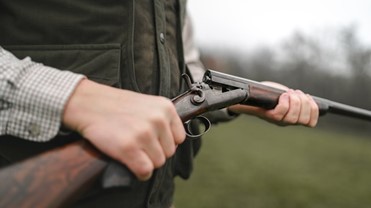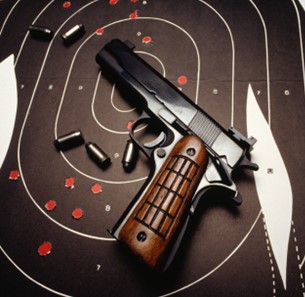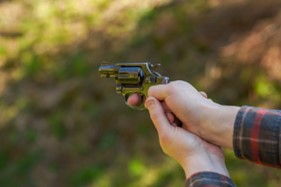Ishmael Haimerl is a certified Firearms Instructor, with certifications from the National Rifle Association, and United States Conceal Carry Association. His role is to instruct the Basic Pistol Permit Training Course and assist with the Armed Security Officer/Blue-card course. In the following article, Ishmael Haimerl explores some valuable tips and techniques to help individuals master firearms training while prioritizing safety and effectiveness.
Firearms training is a crucial aspect of responsible gun ownership. Whether you’re a seasoned shooter or new to the world of weapons, honing your skills through regular practice is essential for safety and proficiency.
Ishmael Haimerl Explains the Basics
Before diving into the intricacies of firearms training, it’s crucial to establish a solid foundation in weapons safety. This begins with adhering to fundamental principles that are universally recognized within the firearms community. Firstly, always treat every firearm as if it is loaded, regardless of its actual state. This mindset instills a sense of caution and responsibility, reducing the risk of accidents. Secondly, keep your finger off the trigger until you are ready to shoot. This simple yet critical rule helps prevent accidental discharges.
Additionally, maintain awareness of your target and what lies beyond it to prevent unintended damage or injury. Lastly, familiarize yourself thoroughly with the operation of your firearm. This includes understanding how to load, unload, and handle it safely.
By mastering these basic safety protocols, individuals lay the groundwork for safe and effective firearms training.
Start with Proper Stance and Grip
Ishmael Haimerl says that one of the fundamental aspects of firearms training is establishing a proper shooting stance and grip. Your stance should be stable and balanced, with your feet shoulder-width apart and your body facing the target. Keep your knees slightly bent to absorb recoil and lean slightly forward to maintain control.
Your grip on the firearm should be firm but not overly tight, with your dominant hand gripping the handle and your non-dominant hand supporting it from below. Ensure that your thumbs are pointed forward and not wrapped around the grip, as this can interfere with the firearm’s operation.
 Focus on Sight Alignment and Sight Picture
Focus on Sight Alignment and Sight Picture
Achieving precise shot placement is contingent upon mastering the fundamentals of sight alignment and sight picture. Sight alignment involves ensuring that the front and rear sights of the firearm are perfectly aligned. This alignment serves as the foundation for accuracy, allowing shooters to maintain consistency in their aim.
On the other hand, sight picture involves aligning the sights with the target itself, ensuring that the firearm is pointed directly at the desired point of impact. Ishmael Haimerl advises shooters to exercise patience and diligence in this process, emphasizing the importance of meticulously aligning their sights before taking a shot. By taking the time to confirm proper sight alignment and sight picture, shooters can enhance their accuracy and proficiency with firearms.
Practice Breathing and Trigger Control
Controlling your breathing and trigger squeeze are critical elements of accurate shooting. Practice taking slow, steady breaths and exhaling halfway before gently pressing the trigger. Ishmael Haimerl suggest to try avoiding jerking or flinching when pulling the trigger, as this can lead to inaccurate shots. Instead, focus on maintaining smooth, consistent pressure until the shot breaks.
Utilize Dry Fire Practice
Dry fire practice, which involves practicing firearm handling and trigger control without live ammunition, is an excellent way to improve your shooting skills safely and effectively. Ishmael Haimerl says to find a safe and secure location free from distractions, ensure your firearm is unloaded, and practice various shooting drills, including sight alignment, trigger control, and target acquisition.
 Seek Professional Instruction
Seek Professional Instruction
While self-guided practice is valuable, nothing beats the guidance of a qualified firearms instructor. Ishmael Haimerl recommends enrolling in a firearms training course taught by certified instructors who can provide personalized instruction tailored to your skill level and goals. Professional instruction can help individuals identify and correct any errors in their technique while instilling confidence and competence in shooting abilities.
Regular Practice and Maintenance
Ishmael Haimerl explains that consistency is key when it comes to firearms training. Set aside time for regular practice sessions to maintain and improve your skills. Additionally, proper firearm maintenance is essential for ensuring reliability and longevity. Clean and lubricate your firearm regularly and inspect it for any signs of wear or damage.
Conclusion
Mastering firearms training requires dedication, practice, and a commitment to safety. By focusing on proper technique, seeking professional instruction, and prioritizing regular practice and maintenance, you can enhance your shooting skills while ensuring safe and effective firearm use. Remember that responsible gun ownership entails not only proficiency with firearms but also a thorough understanding of firearm safety principles. Happy shooting and stay safe!



 Focus on Sight Alignment and Sight Picture
Focus on Sight Alignment and Sight Picture Seek Professional Instruction
Seek Professional Instruction![Nevada Neighborhoods: 10 Best Places to Live in Nevada [2024]](https://ocnjdaily.com/wp-content/uploads/2023/12/AdobeStock_118799748-smsller-238x178.jpg)


